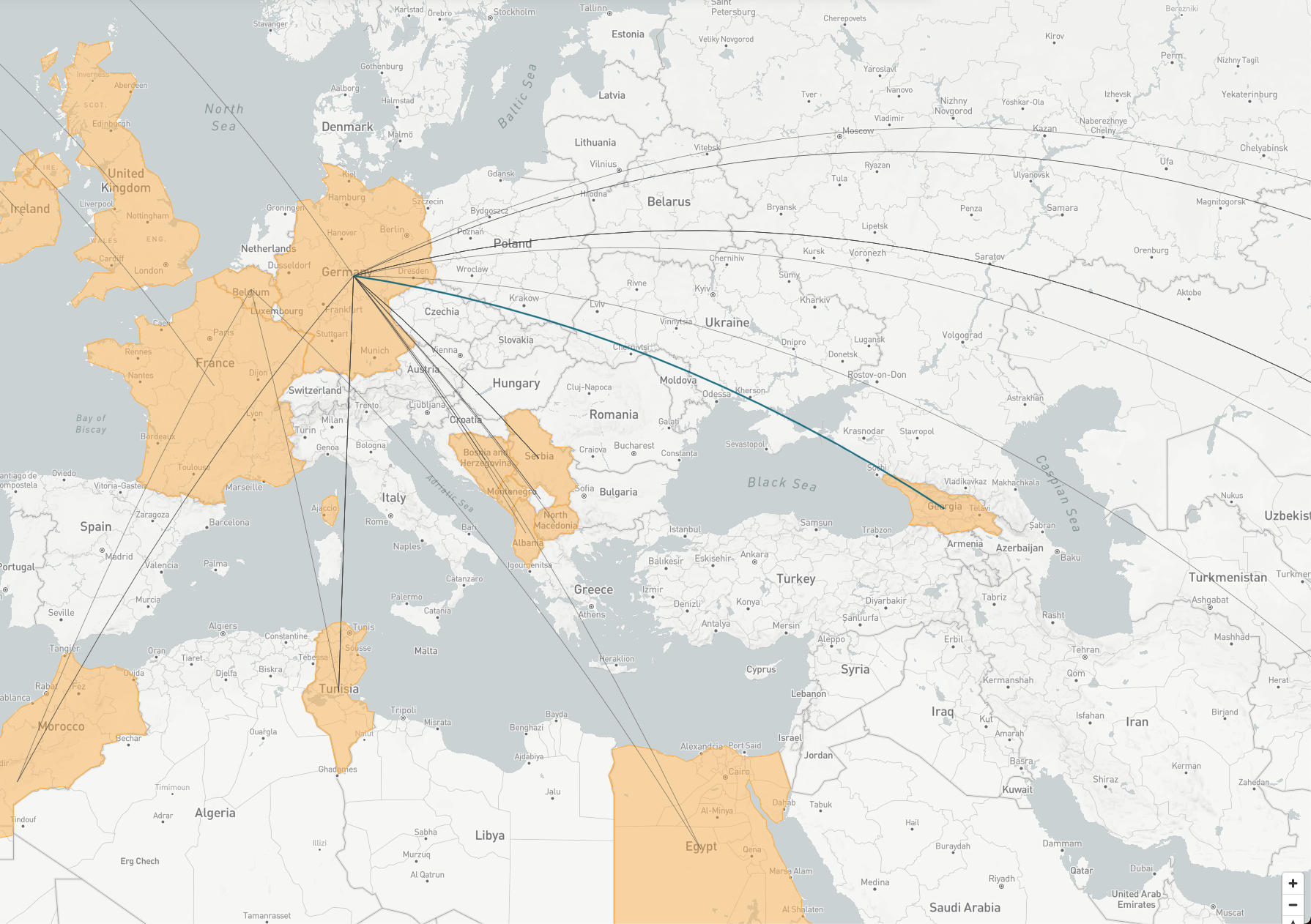- Country of destination: Germany
- Country of origin: European Union, Georgia, and Moldova
- Sectors: Agriculture, Horticulture, and Food Processing
- Skill level: Low
- Timeline: 1990 - ongoing
- Number of beneficiaries: 300,000 per year
Overview
With its large agricultural sector, Germany has long relied on migrant workers from Eastern Europe to meet seasonal labor demands. Germany is now considering sourcing from outside the European Union. Since 2020, it has signed and implemented new bilateral agreements with Georgia and Moldova.
Germany is now considering sourcing from outside the European Union. In 2020, it signed a new bilateral agreement with Georgia, which it implemented in 2021.
Why was it started?
Germany—one of the largest agricultural producers in Europe—has long relied on foreign agricultural labor hired through bilateral agreements. It has negotiated agreements with Bulgaria, Croatia, the Czech Republic, Georgia, Hungary, Poland, Romania, the Slovak Republic, and Slovenia to facilitate the movement of seasonal workers.
The number of seasonal workers from Europe no longer meets the demand from German agriculture. The Federal Ministry of Labor and Social Affairs (BMAS) therefore commissioned the German Federal Employment Agency to conclude placement agreements for seasonal workers in the agriculture sector with selected third countries.
How does it work?
A quarter of Germany’s agricultural workforce is made up of foreign labor (EU and non-EU nationals). Every year since 1990, roughly 300,000 people have come to Germany to work the seasonal harvest. Most of these workers have come from Poland and Romania, with much smaller shares coming from Bulgaria, Croatia, Hungary, and the Slovak Republic. Workers are sourced by recruitment agencies, which charge €200–€300 for a successful referral.
The EU Seasonal Workers Directive, the German employment regulation, allows for the hiring of third-country nationals for seasonal roles. Under Section 15a of the regulation, seasonal workers are permitted to enter Germany for up to 6 months within a 12-month period. The German Federal Employment Agency can grant these migrants work permits for up to 90 days within a period of 180 days. For nationals from Georgia, Moldova, and Ukraine, entry and residence without a visa is possible. Applicants are given preferential consideration if they apply again within the next five years. They must be employed for at least 30 hours a week in roles that comply with broader German laws and regulations regarding working conditions.
What impact has it had?
Between 2010 and 2012, the average hourly agricultural wage was €10 in Germany and €3 in Romania, suggesting large potential income gains for foreign workers. Some employers reportedly failed to pay the minimum wage and social security to their foreign workers, however, reducing this impact, and no studies have been conducted on the effect of the program in the countries of origin.
As countries such as Poland and Romania joined the European Union, Germany relied increasingly on free labor movement to meet seasonal labor demand. Recently, however, amid concerns from the industry, new bilateral agreements with third countries have been sought. The first, with Georgia, was signed in 2020; an agreement with Moldova ensued. Conversations are ongoing with other countries in Eastern Europe, yet COVID-19 and the war on Ukraine has stalled progress on these agreements.
- Lechner, C. 2020. “Attracting and protecting seasonal workers from third countries: Study by the German national contact point for the European Migration Network (EMN).” Working Paper 89.
- Open Society European Policy Institute. 2020. Are agri-food workers only exploited in Southern Europe? Case studies on migrant labour in Germany, the Netherlands, and Sweden.
- Späth, J., T. Brändle, S. Preuss, and M. Reiner. Operationalizing seasonal work in Germany. IAW Discussion Paper 131, Institut für Angewandte Wirtschaftsforschung. Tübingen, Germany

